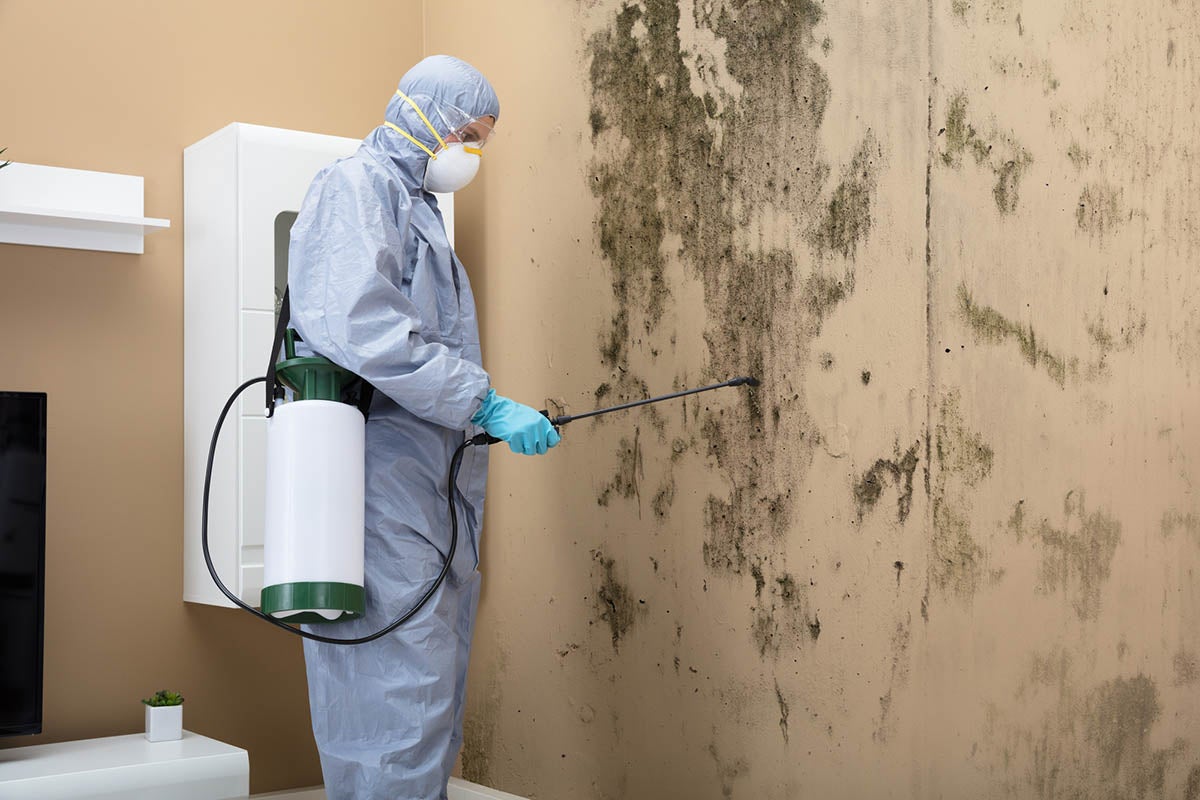After Mold Remediation Methods for Clean Spaces
After Mold Remediation Methods for Clean Spaces
Blog Article
Your Ultimate Guide to Blog Post Mold And Mildew Removal Methods
In the after-effects of mold and mildew invasion, recognizing exactly how to effectively get rid of the mold and mildew and avoid its reoccurrence is extremely important for preserving a healthy and balanced indoor atmosphere. From picking the right cleaning and decontaminating methods to carrying out approaches for long-term mold and mildew prevention, each action in the removal journey plays a crucial role in making sure an effective outcome.
Comprehending Post-Mold Removal Refine
After finishing the mold and mildew remediation procedure, it is critical to recognize the post-mold remediation strategies that are needed to make certain a extensive and efficient cleanup. When the mold and mildew has actually been removed, the next action entails cleansing and sanitizing the affected locations to protect against any kind of regrowth of mold. This includes making use of specialized cleaning up agents to clean down surface areas and kill any remaining mold and mildew spores. It is vital to dry out the location totally to discourage the growth of mold and mildew in the future (Post remediation mold testing near me). Appropriate air flow and dehumidification can aid in this procedure.
Additionally, performing a final assessment post-remediation is vital to make sure that all mold and mildew has been efficiently eradicated. This evaluation needs to involve a detailed visual check in addition to perhaps air sampling to verify the lack of mold and mildew spores in the air. Additional remediation might be necessary if the assessment discloses any kind of lingering mold. Enlightening occupants on preventive procedures such as regulating moisture levels and immediately addressing any type of water leakages can aid maintain a mold-free atmosphere.
Reliable Cleaning Up and Sanitizing Techniques

Protecting Against Future Mold Development

Significance of Correct Air Flow
Proper ventilation plays an essential role in protecting against dampness buildup, a crucial aspect in mold and mildew development within interior environments. Effective air flow systems assist eliminate excess humidity from the air, minimizing the opportunities of mold spores discovering the dampness they require to spread and sprout. Without appropriate ventilation, indoor spaces can come to be a breeding place for mold and mildew, bring about prospective health and wellness risks and structural damages.
By making sure correct air circulation, ventilation systems can also help in drying moist locations quicker after water damages or flooding events, better preventing mold growth. Post Remediation Inspection near me. In spaces like washrooms, cellars, kitchen areas, and attic rooms where wetness degrees tend to be higher, setting up and keeping efficient ventilation systems is critical in preventing mold and mildew infestations

Tracking and Upkeep Tips
Offered the important role that appropriate air flow plays in stopping mold and mildew growth, it is necessary to establish reliable monitoring and upkeep tips to make certain the ongoing functionality of ventilation systems. Routine assessments of ventilation systems should be carried out to examine for any indications of obstructions, leakages, or malfunctions that can restrain correct air movement. Monitoring humidity remove mold on eaves degrees within the property is also vital, as high moisture can add to mold and mildew growth. Installing a hygrometer can assist track humidity levels and sharp property owners to any spikes that might require attention. In addition, making sure that air filters are frequently cleaned or replaced is important for keeping the effectiveness of the air flow system. Applying a schedule for regular upkeep tasks, such as duct cleaning and cooling and heating system examinations, can assist avoid issues prior to they escalate. By remaining proactive and alert to the problem of ventilation systems, residential property proprietors can properly reduce the danger of mold regrowth and preserve a healthy and balanced interior setting.
Final Thought
To conclude, post-mold removal strategies are crucial for making certain a tidy and risk-free atmosphere. Understanding the process, applying reliable cleansing and sanitizing techniques, avoiding future mold development, keeping proper air flow, and routine monitoring are all crucial action in the remediation procedure. By following these guidelines, you can efficiently get rid of mold and mildew and stop its return, functioning or promoting a healthy and balanced living area for all residents.
In the after-effects of mold infestation, recognizing how to effectively eliminate the mold and prevent its reoccurrence is extremely important for keeping a healthy indoor atmosphere. As soon as the mold and mildew has actually been removed, the following step includes cleaning and sanitizing the affected areas to protect against any type of regrowth of mold and mildew - After mold remediation. After eliminating visible mold and mildew development, it is critical to clean up all surfaces in the damaged area to remove any kind of remaining mold and mildew spores. To additionally enhance mold avoidance procedures, it is important to deal with site link underlying issues that originally led to mold advancement.Provided the important duty that proper ventilation plays in protecting against mold and mildew development, it is crucial to develop effective monitoring and maintenance tips to make sure the ongoing functionality of ventilation systems
Report this page